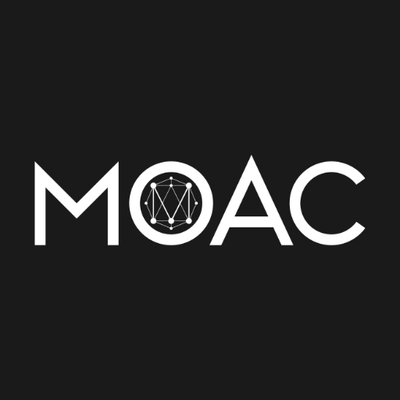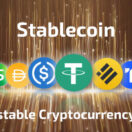MOAC (Mother Of All Chains) is a multi-blockchain platform that is being designed to support digital transactions, smart contracts, data access and information flow. The project states that it wants to surpass Ethereum and EOS in terms of network speed, efficiency, and functionality. The MOAC blockchain will use an advanced multi-layered architecture to lower dApp developer costs, provide scalability, and reduce development complexity. It also plans on using sharding to increase transaction speeds and volume.
The project is being developed by MOAC Blockchain Tech, Inc, which is a registered for-profit in the U.S. with offices in California and extended development teams in Beijing, China.
How MOAC Works
MOAC is made up of two core layers:
1. MotherChain: The bottom layer. It’s a proof-of-work main chain that handles blockchain operations, transactions, consensus, and data access.
2. MicroChains: The layers on top of the MotherChain. They are made up of side chains that support smart contracts and DApps. MOAC implements a unique MicroChain for every smart contract, providing efficiency and scalability beyond existing solutions.
By separating the transaction ledger and smart contracts, MicroChains are capable of processing transactions at speeds up to 100 times faster than the Ethereum blockchain.
MicroChains can also use unique consensus algorithms. For example, you could create a MicroChain that uses a proof-of-stake consensus model and is specifically designed to scale to high volume transactions while remaining energy efficient.
In addition to proof-of-work and proof-of-stake systems, MicroChains can also support plug-and-play consensus systems like Proof of Elapsed Time, Proof of Burn, Proof of Activity, etc.
Since MicroChains are isolated from the MotherChain, developers can choose to run a variety of virtual machines for smart contracts on a per instance basis. They can leverage the platform’s API to expand existing smart contract functionality without having to learn how to program on a new blockchain.
Developers can also initiate a wide range of business logic and DApp use cases, and use different file systems such as IPFS, sensor networks for data storage, and even the implement artificial intelligence.
Asynchronous Smart Contracts
MOAC leverages asynchronous smart contracts by using MicroChains to accelerate DApp development and deployment. It supports two types of smart contracts:
Upper Layer Smart Contracts – Protocol-based contracts for defining consensus systems within MicroChains.
One Bottom Layer Contract – A global smart contract that defines the behavior of the control flows of MicroChains, including rewarding miners and punishing bad actors. It provides a flexible environment that enables DApps to use different kinds of virtual machines, including Ethereum, Java, and more.
Sharding
Sharding is a form of blockchain partitioning that separates very large nodes into smaller, faster and more easily managed shards. It can provide more processing power proportional to the number of nodes in the network.
MOAC uses sharding to horizontally partition data across multiple chains and nodes, allowing it to scale more effectively and significantly increase its transaction rate.
Developers who deploy smart contracts on MOAC will form a shard and define the number of service nodes, consensus protocol, block generation time, block size, and flush frequency.
Cross-Chain Functionality
MOAC supports cross-chain functionality and can interact with a variety of third-party blockchains and cryptocurrencies. The platform can swap data between multiple chains and can atomically swap cryptocurrencies in a single transaction between different chains.
Event Handling
MOAC has an event handling system above the MotherChain layer that handles network event requests and replies, processes control flow requests, and can invoke smart contract-related operations. The event handling system relays transaction calls between multiple layers on MOAC and is primarily used for all balance transfers, global smart contract control, flushing, and other consensus-related messaging.
Mining MOAC
MOAC has its own mineable cryptocurrency and new tokens are regularly issued and distributed to miners for verifying transactions. The platform allows network participants to mine from lower-power devices like mobile phones, incentivizing growth for network stability. It has two types of mining:
MicroChain Mining – Nodes in the upper layer can verify transactions for smart contracts and other consensus systems. Each node is rewarded with MOAC tokens and tokens associated with that specific MicroChain.
MotherChain Mining – The MotherChain uses a proof-of-work algorithm and mining on this layer is similar to mining ETH on Ethereum.
API
The MOAC API provides dApp developers with easy access to blockchain specific functions without having to know the specifics of blockchain implementation. Developers can build complex applications by simply calling those functions from MOAC.
MOAC vs. Other Blockchain Platforms
MOAC is directly competing with established dApp and smart contract blockchain platforms like Ethereum, EOS, NEO, and Cardano. Other than smart contract functionality, MOAC brings several benefits to dApp developers:
Quality of Service – Applications run more efficiently on MOAC. Ethereum is limited by its transaction rate and poor scalability. It inherently can’t handle large transactions and computation volume, which was why a simple game like CrypoKitties jammed the entire network.
Cost – Running a smart contract or dApp on Ethereum is costly because every transaction triggered by the smart contract requires a certain amount of Gas. Transactions on MOAC are 1/10th of the cost on Ethereum and upper-layer smart contract calls (MicroChains) are free.
Flexibility – Most dApps only have their transaction logic on Ethereum, while the rest of their components are “off chain” solutions that rely on traditional centralized servers and databases. DApps on MOAC are completely decentralized. They use MicroChains, which provide GPU computation, CPU computation, databases, file storage, and more, while maintaining a decentralized structure.
Cross-Chain Functionality – MOAC has cross-chain capabilities and developers can switch between tokens within specific dApps without having to go back and forth between exchanges.
MOAC Trading Volume, Price and Market Cap
The total supply of MOAC is capped at 150 million tokens. The tokens are distributed as follows:
– 56 million tokens make up the total circulating supply
– 28 million tokens were sold during the ICO
– 63 million tokens are being held by the MOAC Foundation
– 31 million tokens will fund the ongoing development of the platform
An additional 6 million tokens will be generated every year through mining, further increasing the circulating supply. The production will halve every four years until it reaches a final hard cap of 210 million coins in 2058.
The value of MOAC has had a lot more downs than ups since its official launch. Its price was first listed at $15 USD in January 2018. It slowly declined over the next few months and now sits at ~$2 USD with a market cap of ~$102 million USD. It doesn’t look like it’ll top its original price any time soon.
Buying, Storing and Selling MOAC
At the time of our review, MOAC was only listed on two obscure cryptocurrency exchanges and was not available at any of the major exchanges.
MOAC tokens can be stored on the official web wallet and on Token Pocket (Android and iOS). The MOAC team is reportedly working on developing a desktop wallet that will be released when the mainnet is launched.
Liquidity of MOAC
MOAC has very poor market liquidity because it can only be acquired from two relatively unknown crypto exchanges and its value has dropped to 1/8th of its original price. It’s still a young project and likely needs more time to accomplish the goals outlined on its roadmap, but it’s also not really bringing anything new to the table. Interested investors should trade with care.






